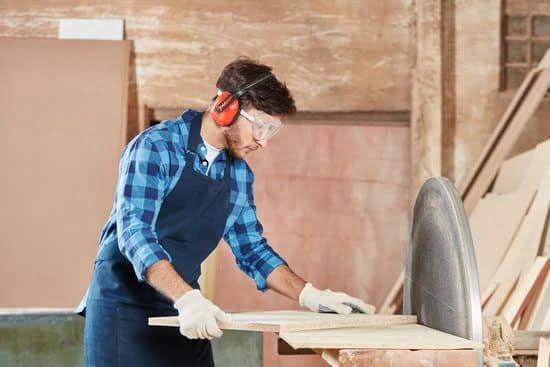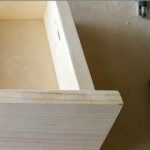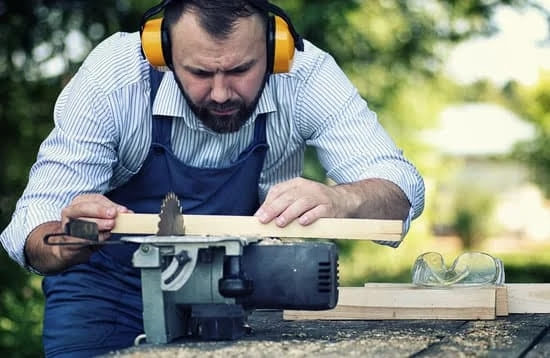Are you wondering how to sharpen a woodworking knife on a whetstone? Keeping your woodworking knife sharp is essential for achieving clean and precise cuts in your projects. Using a whetstone for sharpening offers numerous benefits, including maintaining the integrity of the blade and ensuring a longer lifespan for your tools.
A sharp woodworking knife is crucial for achieving accurate and efficient cuts in wood, making it an indispensable tool for any woodworker. Dull blades can lead to jagged edges, splintering, and imprecise cuts, ultimately affecting the quality of your work. Regular maintenance and sharpening of your woodworking knife are necessary to ensure optimal performance.
One of the most effective ways to sharpen a woodworking knife is by using a whetstone. Whetstones are versatile sharpening tools that offer precision and control during the sharpening process.
In this article, we will explore the importance of maintaining a sharp woodworking knife and delve into the benefits of using a whetstone for sharpening. We will also provide step-by-step instructions on how to properly prepare and use a whetstone to achieve razor-sharp results for your woodworking knives.
Selecting the Right Whetstone
When it comes to sharpening a woodworking knife on a whetstone, selecting the right whetstone is crucial for achieving the best results. There are different types of whetstones available, each with its own unique characteristics and benefits. Here are some tips for exploring the different types of whetstones and choosing the best one for sharpening woodworking knives:
Types of Whetstones:
1. Oil Stones: These whetstones use oil as a lubricant while sharpening, and they are known for providing a smooth finish on the blade.
2. Water Stones: Water stones use water as a lubricant and are known for their fast cutting action, making them ideal for quickly sharpening woodworking knives.
3. Diamond Stones: These whetstones use industrial diamonds to create a flat, abrasive surface, making them highly durable and suitable for sharpening all types of blades.
Choosing the Best Whetstone:
– Consider the type of steel in your woodworking knife when selecting a whetstone, as different steels may respond better to certain types of whetstones.
– Determine the level of sharpening needed for your woodworking knife – if it requires heavy reprofiling, a coarser grit stone may be necessary, while finer grit stones are suitable for regular maintenance.
– Take into account your experience level with using whetstones, as some may be easier to use for beginners than others.
Once you have selected the right whetstone for sharpening your woodworking knife, you can proceed with preparing the whetstone and setting the blade angle for optimal results.
Preparing the Whetstone
Properly preparing the whetstone is crucial for achieving a razor-sharp edge on your woodworking knife. Before using the whetstone, it is important to soak it in water for a specified amount of time, usually 10-20 minutes. Soaking the whetstone helps to prevent the blade from getting clogged with metal particles during sharpening and ensures a smoother and more effective sharpening process.
After soaking, the next step is to flatten the whetstone. This involves leveling the surface of the stone to remove any unevenness or grooves that may have developed over time. Flattening the whetstone can be done using a flattening plate or a piece of sandpaper placed on a flat surface. By ensuring that the whetstone is flat, you will be able to sharpen your woodworking knife more evenly and efficiently.
To flatten the whetstone using a flattening plate, simply rub the plate against the stone in circular motions until you achieve a uniformly flat surface. If you are using sandpaper, place it on a flat surface and rub the stone against it until it becomes smooth and level. Once the whetstone is properly soaked and flattened, it is ready for use in sharpening your woodworking knife.
Properly preparing your whetstone before sharpening your woodworking knife is essential for achieving optimal results. By following these step-by-step instructions for soaking and flattening the whetstone, you can ensure that your knife gets the sharp edge needed for precision woodworking tasks.
Setting the Blade Angle
Understanding the Importance of Blade Angle
The angle at which you sharpen your woodworking knife on a whetstone plays a crucial role in determining the sharpness and durability of the blade. The angle will affect how sharp the edge of the blade becomes and how long it will stay sharp. Understanding the importance of finding the correct blade angle is essential for achieving optimal results when using a whetstone to sharpen your woodworking knife.
Finding the Correct Angle
When it comes to sharpening a woodworking knife on a whetstone, finding the correct angle can be challenging but is necessary for producing a razor-sharp edge. To determine the correct angle, experts recommend starting at around 20 degrees for most woodworking knives. However, some knives may require different angles based on their design and purpose. It’s important to consider factors such as the type of wood being worked with and personal preference when selecting the angle.
Using Guide Tools
For those who are new to sharpening woodworking knives on a whetstone, using guide tools can be incredibly helpful in maintaining an accurate and consistent angle throughout the sharpening process. Guide tools are designed to attach to the blade and provide a visual aid for maintaining the proper angle while sharpening.
This can be especially beneficial for beginners who are still learning how to manually hold and maintain consistent angles during sharpening. Using these guide tools can help ensure that you achieve the best results when sharpening your woodworking knife on a whetstone.
Sharpening Process
Proper Technique
To begin the sharpening process, it’s essential to hold the woodworking knife at the correct angle against the whetstone. The ideal angle for sharpening a woodworking knife is typically between 15 and 20 degrees. Finding this angle can be achieved by using a sharpening guide or by visually estimating the angle based on the size of the blade. Once the angle is determined, maintain a consistent pressure while dragging the blade across the whetstone.
Number of Strokes
The number of strokes needed to sharpen a woodworking knife on a whetstone varies depending on the condition of the blade and how dull it has become. Generally, it is recommended to start with around 10-15 strokes on each side of the blade.
It’s important to monitor the progress as you go, checking for any burrs formed along the edge. Once you have established an even edge and removed any burrs, you can gradually decrease the number of strokes per side to refine and polish the blade.
Alternating Sides
When sharpening a woodworking knife on a whetstone, it’s crucial to maintain an equal number of strokes on both sides of the blade. This helps ensure that you achieve a balanced and symmetrical edge. By alternating between both sides during each stroke, you prevent over-sharpening one section of the blade while neglecting another. Remember to maintain consistency in your movements and apply even pressure throughout each stroke for optimal results when sharpening your woodworking knife on a whetstone.
Testing the Sharpness
Once you have completed the sharpening process using a whetstone, it is important to test the sharpness of your woodworking knife. One common method for testing sharpness is the “paper test.” Simply take a piece of paper and attempt to slice through it with your knife. If the knife cuts smoothly and easily, then it is adequately sharp.
However, if it tears or rips the paper, then further sharpening is needed. Another effective way to test sharpness is by shaving a small portion of arm hair. If the blade can easily shave hair without causing discomfort, then it is indeed razor-sharp.
In addition to these practical tests, ensuring that your woodworking knife remains sharp involves proper maintenance. This includes storing your knife in a sheath or blade guard when not in use, regularly honing the edge with a steel or ceramic rod to realign any bent edges, and cleaning the blade after each use to prevent rust or corrosion.
By incorporating these maintenance tips into your routine, you can prolong the sharpness of your woodworking knife and reduce the frequency of sharpening sessions.
For woodworkers who may be new to using a whetstone for sharpening their woodworking knives, patience and practice are key. The more you immerse yourself in this traditional skill, the better you will become at mastering the techniques necessary for achieving a razor-sharp edge on your woodworking knives.
| Testing Method | Outcome |
|---|---|
| Paper Test | Cut smoothly and easily = adequately sharp; Tears/rips paper = further sharpening needed |
| Shaving Arm Hair | Easily shaves hair without discomfort = razor-sharp |
Maintenance Tips
After going through the process of sharpening your woodworking knife on a whetstone, it’s essential to ensure that you maintain the sharpness of the blade. Proper storage and regular upkeep are crucial in preserving the edge that you worked hard to achieve.
One important maintenance tip is to store your newly sharpened woodworking knife properly. It’s best to keep it in a dry area to prevent rusting. Consider using a blade cover or sheath to protect the sharp edge and prevent any accidents when reaching for the tool. Additionally, storing your knives away from other metal tools is recommended to avoid unnecessary contact that can cause dulling or chipping.
Regular upkeep is also necessary for maintaining the sharpness of your woodworking knife. This includes honing the blade with a honing steel or rod before each use. A few quick strokes on each side of the blade will help realign any microscopic burrs that may have formed during regular use or storage. Moreover, periodically re-sharpening your knife on a whetstone will be needed depending on how often you use it and what materials you cut.
Lastly, keep in mind that regular cleaning is vital for preserving the edge of your woodworking knife after sharpening on a whetstone. Make sure to wipe down and dry your knife after every use to prevent any build-up that can affect its cutting capabilities.
| Maintenance Tip | Description |
|---|---|
| Proper Storage | Store in dry area, use blade cover/sheath, avoid contact with other metal tools |
| Regular Upkeep | Hone with honing steel/rod before each use, periodically re-sharpen as needed |
| Regular Cleaning | Wipe down and dry after every use to prevent build-up |
Conclusion
In conclusion, the importance of a sharp woodworking knife cannot be overstated. Whether you are a professional woodworker or a hobbyist, having a sharp blade is essential for achieving clean and precise cuts.
Using a whetstone for sharpening offers numerous benefits, including the ability to customize the angle and level of sharpness according to your specific needs. By following the step-by-step instructions outlined in this article, you can effectively sharpen your woodworking knife on a whetstone and ensure that it stays in optimal condition for all your woodworking projects.
As discussed, selecting the right whetstone is crucial for achieving the best results when sharpening your woodworking knife. Whether you choose a natural or synthetic whetstone, it is important to consider the grit size and material composition to ensure that it is suitable for your specific knife and sharpening needs.
Additionally, properly preparing the whetstone by soaking and flattening it is essential to create an ideal surface for sharpening. Finding the correct blade angle and mastering the sharpening process are also key components in achieving a razor-sharp edge on your woodworking knife.
Frequently Asked Questions
Can You Sharpen Any Knife With a Whetstone?
Not any knife can be sharpened with a whetstone. While it is possible to sharpen many types of knives with a whetstone, some knives, such as serrated knives or ceramic knives, may not respond well to this method of sharpening.
What Angle Do You Hold the Knife When Using Whetstone?
When using a whetstone to sharpen a knife, the angle at which you hold the knife is usually between 15-20 degrees. This allows for effective sharpening without damaging the blade. It’s important to maintain this consistent angle throughout the process.
How Many Strokes Does It Take to Sharpen a Knife With a Whetstone?
The number of strokes it takes to sharpen a knife with a whetstone can vary depending on the initial condition of the blade and the coarseness of the stone. Generally, it may take anywhere from 10 to 50 strokes per side to achieve a sharp edge.
It’s important to regularly check the sharpness of the blade while sharpening to avoid overdoing it.

Hi everyone! I’m a woodworker and blogger, and this is my woodworking blog. In my blog, I share tips and tricks for woodworkers of all skill levels, as well as project ideas that you can try yourself.





